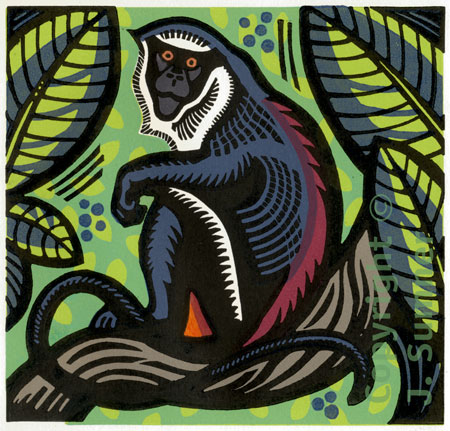As a linguist I struggle with genetics, I am, however, as an evolution geek, very interested in it. This creates all sorts of problems and high levels of anxiety when talking about FOXP2 and other genes, due to fear that I misunderstand the very highly complex interactions which exist between genes, environmental effects or cascading effects which cannot be summed up in a simple “x gene causes x trait in humans” paradigm.
I would like to point everyone towards a new blog Dorothy Bishop’s written over at guardian science blogs:
Where does the myth of a gene for things like intelligence come from?
Which is about busting the widespread belief (for idiots like me) that individual genes determine traits such as intelligence, optimism, obesity and dyslexia. I find it interesting that this is presented in the blogs section and not as a mainstream article.
She points out on Twitter this morning that the Jedward pic was not her idea. (I add this point because I found it weirdly comforting)
And it’s also lovely to see that at the bottom of the pile of comments is a well articulated reply by Dorothy to individual users.
I love blogging, because there exists the ability for individuals to reply to claims made about them, primary sources (papers &c.) are cited and checkable and there’s none of the unnecessary dumbing down found in mainstream media. Here’s an article by Ben Goldacre expanding on this subject (which incidentally includes work by Dorothy Bishop).
Here is a parable about how, as a blogger, my claims were checked, discussed and ultimately concluded to be bollocks. (I don’t have a contrastive parable about what would have happened if I’d instead made these claims in the mainstream media but many stories of this nature can be found here.)
If you read the blog post I wrote about links between Autism and SLI you would have seen me make this claim:
the CNTNAP2 gene has been found in independent samples to be associated with both ASD and SLI. This is interesting because it could show that gene mutations which cause improved social abilities could have also caused changes in our linguistic ability on a syntactic or phonological level.
This blog post cited the work of Dorothy Bishop quite heavily and she took the time out to come and tell me problems with it. Here’s what she said:
As you anticipated, I think there are some problems with the implications you draw from the work. There are two issues. The first is that the variants of CNTNAP2 associated with language level are not mutations. You would usually only use that term in the case where most people had the same DNA sequence in a gene, but rare individuals had a different DNA sequence. FOXP2 is a case in point: there is a family, the KE family, who have a mutation affecting around half the family members, where the DNA sequence is changed. For most people in the general population, and for most people with SLI, the FOXP2 sequence is the same.
The CNTNAP gene is very different. The DNA sequence has different versions in different people, and one version, which is pretty common in the general population, is associated with a small decrease in language abilities, but most people with this version would not be recognised as having any language impairment. Most researchers now think that SLI is probably the result of the combined effect of many genes, each of which may nudge language ability up or down a bit. In this regard, language ability is rather like height: there are rare mutations that may make a person drastically tall or short, but most variation in height arises from combined effect of many small influences of genes that show DNA variation in the normal population.
The second issue concerns the evidence for CNTNAP2 being involved in both SLI and autism. Many people in the field do think this means that the same gene that can cause SLI can also cause autism, and that the only difference is that people with autism have additional difficulties going beyond language – what I have termed the ‘autism as SLI plus’ model. I supported that model in the past, but there are some facts that are hard to square with it. First, although many people with autism have structural language problems (affecting grammar and phonology) similar to those in SLI, not all of them do. So people with high-functioning autism or Asperger syndrome may have well-developed skills in syntax and phonology, while still having difficulties with pragmatics. The second point, which is a big problem for a simple genetic account, is that whereas the relatives of people with SLI often have some difficulties with structural language, we don’t usually see that in relatives of people with autism, even if the person with autism has poor language skills. It was this latter point that I was particularly keen to try and explain in my paper. The bottom line is that to explain the pattern of data we need to think in terms of interactions between genes (technically known as epistasis). So there are genetic variants that increase risk of autism, and others that increase risk of SLI. Most of these will have an individually small effect. However, if you have a risk variant for a gene influencing SLI (such as CNTNAP2) in the context of having a genetic risk for autism, the effect on language will be much worse. According to this model CNTNAP2 doesn’t affect both social cognition and language; rather it affects language, but that effect will get multiplied if the person also has risk factors for autism.
Which is SOOOO interesting.
I’d really like to thank her for replying, it’s really lovely to know that high-flying academics are willing to help out when a sincere blogger tries to understand something and falls on their arse.

